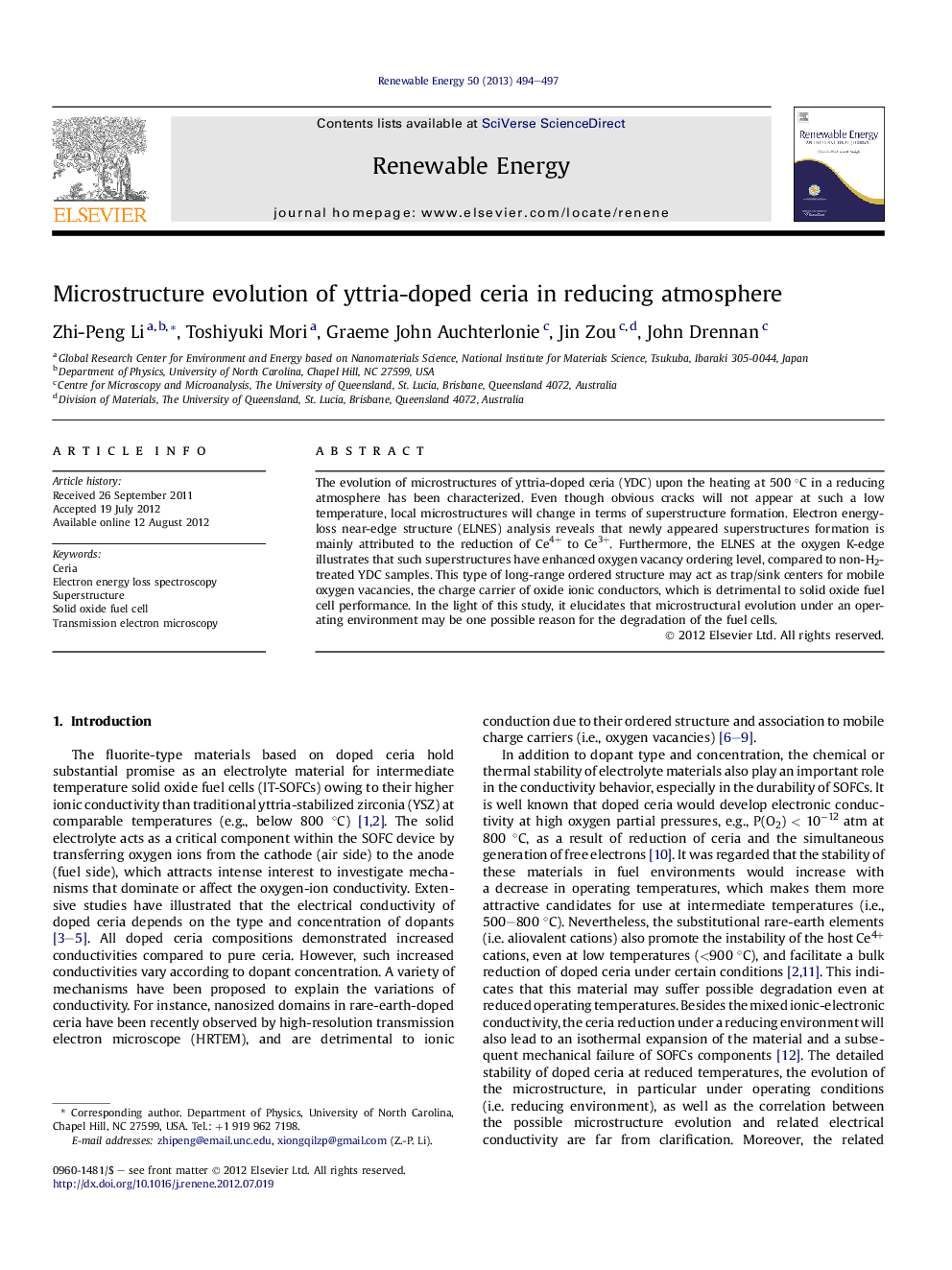| Article ID | Journal | Published Year | Pages | File Type |
|---|---|---|---|---|
| 300403 | Renewable Energy | 2013 | 4 Pages |
The evolution of microstructures of yttria-doped ceria (YDC) upon the heating at 500 °C in a reducing atmosphere has been characterized. Even though obvious cracks will not appear at such a low temperature, local microstructures will change in terms of superstructure formation. Electron energy-loss near-edge structure (ELNES) analysis reveals that newly appeared superstructures formation is mainly attributed to the reduction of Ce4+ to Ce3+. Furthermore, the ELNES at the oxygen K-edge illustrates that such superstructures have enhanced oxygen vacancy ordering level, compared to non-H2-treated YDC samples. This type of long-range ordered structure may act as trap/sink centers for mobile oxygen vacancies, the charge carrier of oxide ionic conductors, which is detrimental to solid oxide fuel cell performance. In the light of this study, it elucidates that microstructural evolution under an operating environment may be one possible reason for the degradation of the fuel cells.
► Yttria-doped-ceria can be partially reduced as low as 500 °C. ► Superstructures will be formed after Ce4+ reduction. ► Long-range ordered structure may be one reason for IT-SOFC degradation.
